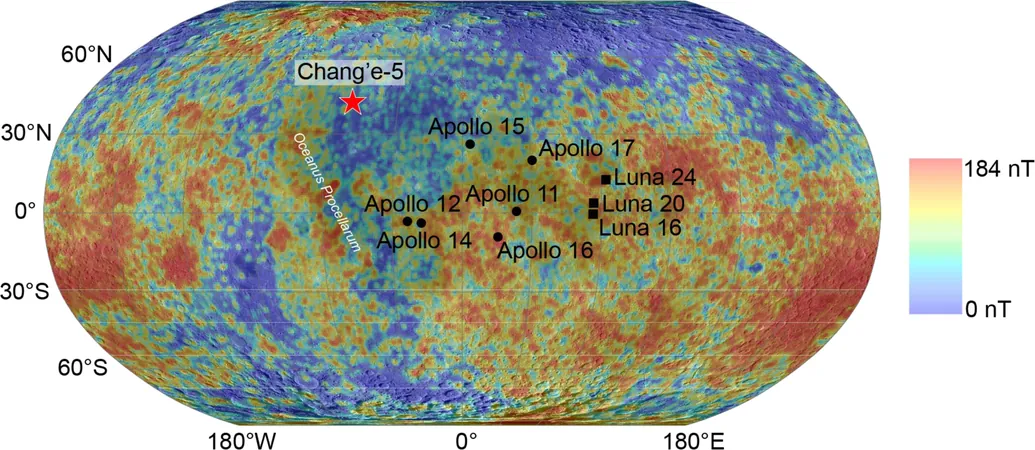
Astonishing Discovery: Moon's Magnetic Field Existed 2 Billion Years Ago!
2025-01-06
Author: Amelia
A groundbreaking study by a talented team of researchers at the Chinese Academy of Sciences has revealed astonishing evidence that the moon possessed a weak magnetic field approximately 2 billion years ago. This eye-opening finding, published in the prestigious journal Science Advances, is based on meticulous analysis of rock samples brought back by China's Chang'e-5 lunar exploration mission.
In December 2020, the Chang'e-5 space probe returned to Earth with a treasure trove of 1,731 grams of lunar dust and rocks. Following this monumental mission, the samples have undergone scrutiny from various scientific teams, but this latest study sheds new light on the moon’s magnetic history.
Current observations confirm that the moon does not have a global magnetic field today; however, research indicates that it once did, thanks to thermomechanical convection within its interior that triggered a dynamo effect. Previously, analysis of lunar rocks collected during the Apollo missions and the Soviet Union's Luna missions demonstrated that a weak magnetic field existed around 4 billion years ago. This magnetic field was about 1/20th the strength of Earth’s.
The implications of the new findings from the Chang'e-5 samples are profound. Testing of these primarily basaltic samples indicated that the moon's magnetic field measured between 2,000 to 4,000 nanoteslas during its middle years, far later than previously believed. This discovery suggests that molten material existed beneath the moon's surface for a significantly longer period than thought, indicating prolonged volcanic activity.
Furthermore, the presence of a magnetic field would have provided essential protection for any existing water reserves on the moon’s surface from harsh solar winds, preserving them in their original state. This also raises tantalizing questions about the potential for ancient water ice in the moon's permanently shadowed regions, which could have implications for future lunar exploration and the search for life.
As scientists continue to unlock the mysteries of our celestial neighbor, the findings from Chang'e-5 not only enrich our understanding of the moon's geology but also stimulate curiosity about its evolution and the broader dynamics of our solar system. This groundbreaking research may lead to new insight into the moon's role in the development of life on Earth and the potential for human colonization of our closest cosmic companion. Keep watching the skies—exciting discoveries await!



 Brasil (PT)
Brasil (PT)
 Canada (EN)
Canada (EN)
 Chile (ES)
Chile (ES)
 Česko (CS)
Česko (CS)
 대한민국 (KO)
대한민국 (KO)
 España (ES)
España (ES)
 France (FR)
France (FR)
 Hong Kong (EN)
Hong Kong (EN)
 Italia (IT)
Italia (IT)
 日本 (JA)
日本 (JA)
 Magyarország (HU)
Magyarország (HU)
 Norge (NO)
Norge (NO)
 Polska (PL)
Polska (PL)
 Schweiz (DE)
Schweiz (DE)
 Singapore (EN)
Singapore (EN)
 Sverige (SV)
Sverige (SV)
 Suomi (FI)
Suomi (FI)
 Türkiye (TR)
Türkiye (TR)
 الإمارات العربية المتحدة (AR)
الإمارات العربية المتحدة (AR)